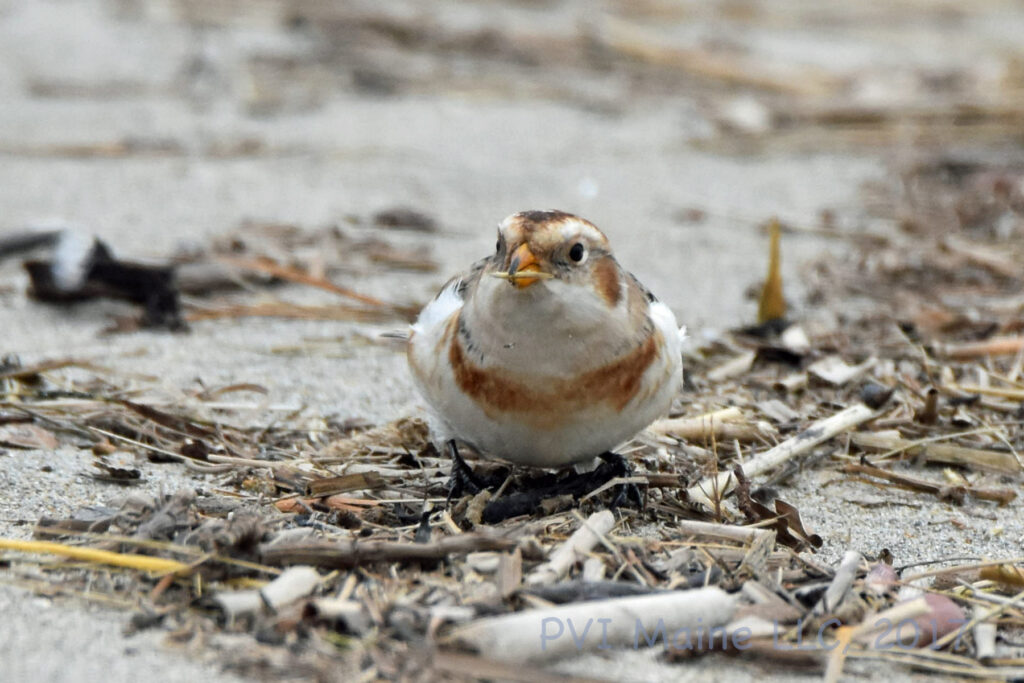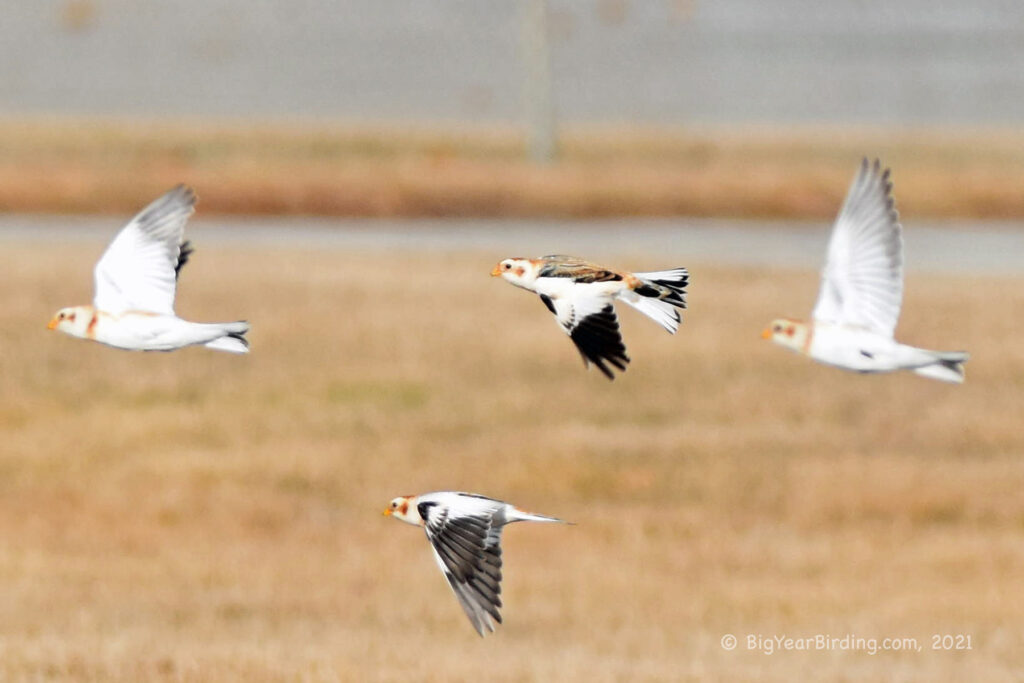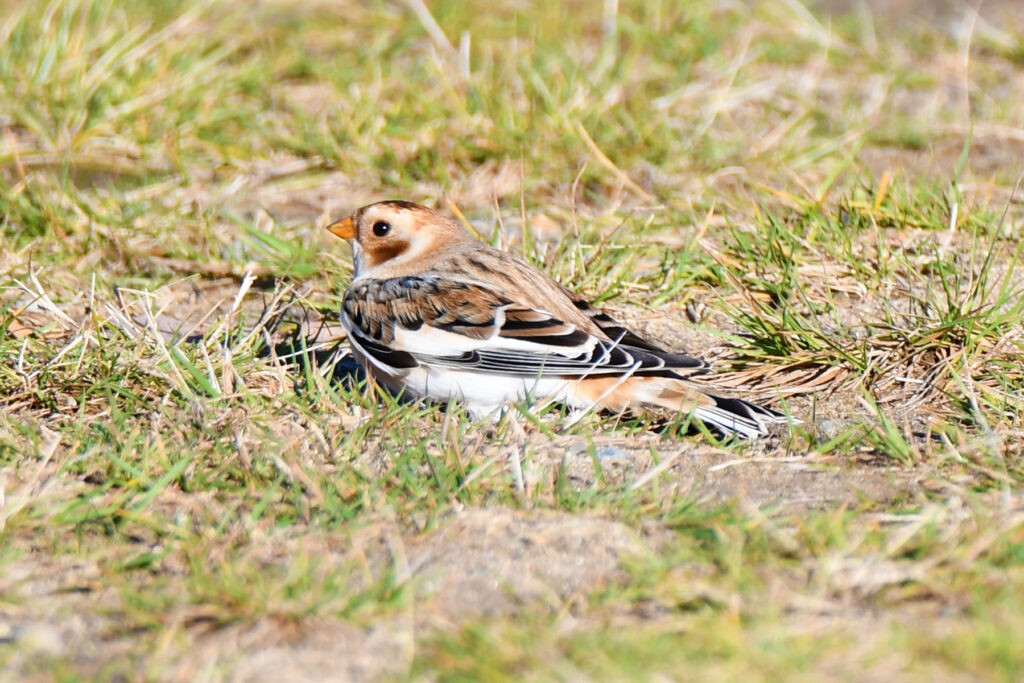
The Snow Bunting (Plectrophenax nivalis) is a passerine bird that belongs to the family Emberizidae. They are small birds that measure about 6.5 to 7 inches in length and weigh between 1.1 to 1.8 ounces. Males are generally heavier than females, and their wingspan is about 11.8 inches.
Snow Buntings have distinct plumage, with striking black and white feathers on their wings, back, and head. During breeding season, males have a black crown, while females have a brownish-gray crown. Both males and females have white underparts, and their bills and legs are yellowish-orange. In winter, their plumage becomes browner, with less contrasting black and white. Juvenile birds have more streaked and mottled plumage.
The Snow Bunting breeds in the Arctic tundra of North America and Eurasia. During the winter, they migrate to more southerly regions, including northern Europe, Asia, and North America. In North America, they can be found from Alaska to Newfoundland and as far south as the northern United States.
Snow Buntings are highly social birds that often gather in large flocks during the non-breeding season. They feed on seeds, insects, and invertebrates, and can often be found foraging on the ground. They have been known to eat snow and ice to obtain moisture during the winter months.

The Snow Bunting is an important bird in many cultures, and has been featured in artwork, literature, and music. In some Inuit cultures, the Snow Bunting is considered a messenger from the spirit world. In North America, the Snow Bunting has been hunted for food and sport, but their populations remain stable. However, climate change may pose a threat to their Arctic breeding grounds, as warming temperatures and changing weather patterns may affect their food sources and nesting success.

